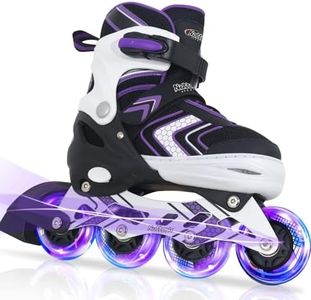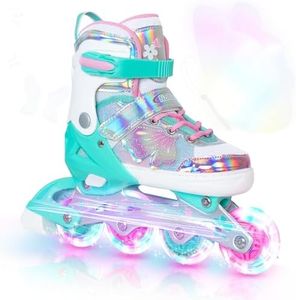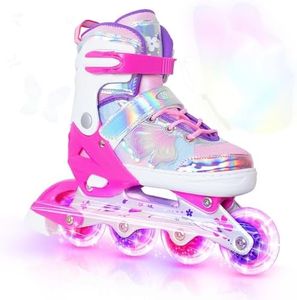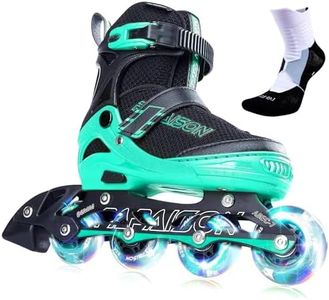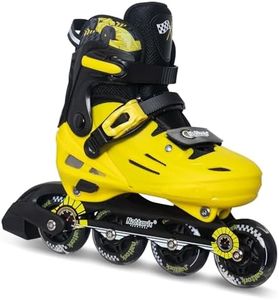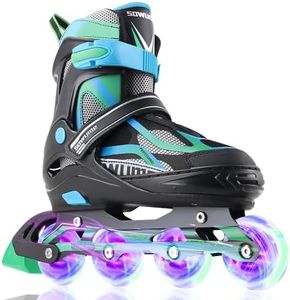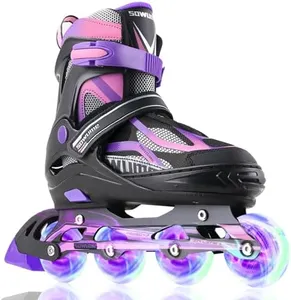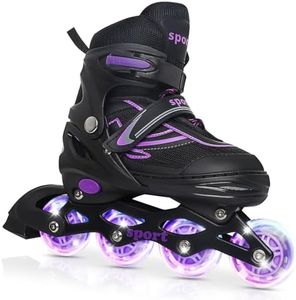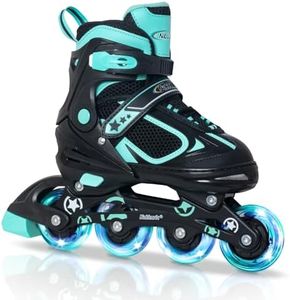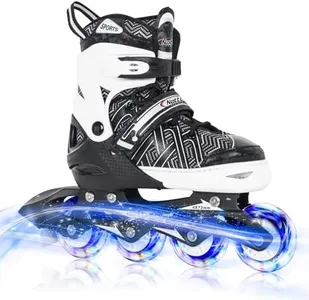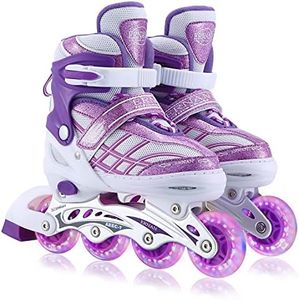We Use CookiesWe use cookies to enhance the security, performance,
functionality and for analytical and promotional activities. By continuing to browse this site you
are agreeing to our privacy policy
10 Best Kids Inline Skates
From leading brands and best sellers available on the web.Buying Guide for the Best Kids Inline Skates
Choosing the right kids' inline skates is about balancing comfort, safety, and fun. Since children grow quickly and may use their skates for different activities—like skating in the park, practicing tricks, or just occasional fun—it's important to focus on features that make the skates easy to use, protective, and adaptable. By understanding the key specifications, you can ensure your child has a good experience and stays safe while building their skating skills.Size AdjustabilitySize adjustability refers to the skate's ability to expand or contract to fit different foot sizes. This is crucial for kids because their feet grow rapidly, and having adjustable skates means you won't need to buy a new pair every time their shoe size changes. Skates usually come with mechanisms that let you extend the boot through a range of sizes, typically covering 2-4 shoe sizes. If your child is still growing, adjustable skates are a smart choice, but you should make sure the skate still provides a snug, supportive fit in each size setting.
Wheel SizeWheel size indicates how large the wheels are, measured in millimeters. Smaller wheels (typically 64-72mm) are common for kids and offer better control and easier balance at slower speeds, making them great for beginners. Larger wheels (above 72mm) roll faster and more smoothly over uneven surfaces but may feel less stable for young or novice skaters. If your child is just starting out, go for smaller wheels for easier maneuvering; if they already skate confidently and want more speed, consider larger wheels.
Boot Support and PaddingBoot support and padding describe how firmly the skate holds the foot and how much cushioning it provides inside. Good support is important to prevent ankle injuries and help with balance, while padding ensures comfort during longer skate sessions. Skates with stiffer boots offer more ankle support—ideal for beginners or those who might be less steady—while soft boots give more flexibility and are usually lighter. If your child is new to skating or still learning to balance, a skate with a well-padded, supportive boot is key.
Closure SystemThe closure system refers to how the skates stay on the foot, including buckles, laces, straps, or a combination. Easy-to-use closures make it simpler for kids to put skates on and take them off by themselves, and a secure closure prevents wobbling and accidents. Classic laces offer a customized fit but might take longer to tie, while straps and buckles are faster and may be easier for young hands. Choose a closure system that your child can manage easily and that keeps the skate securely on their foot.
Brake TypeBrake type means how the skates help a child stop. Most kid skates come with a heel brake, which is a rubber piece attached to the back of one skate. This is simple and effective for most beginners and casual skaters. Some advanced skates, especially those suited for tricks, might have removable or no brakes. For most children, especially those learning or skating for leisure, a skate with a sturdy heel brake is safest and easiest to use.
Bearing QualityBearings are small parts inside the wheels that affect how smoothly and quickly the skates roll. Higher quality bearings make skating feel smoother and require less effort, but they also mean the skates can go faster, which may not always be ideal for beginners. Bearings are often rated with an 'ABEC' number; higher numbers usually indicate more precision. For young kids or those just starting, standard bearings (like ABEC 1-5) are suitable, offering a balance between smooth movement and manageable speed.
